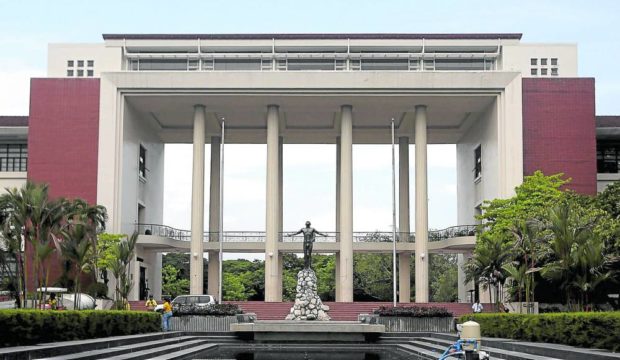
University of the Philippines (INQUIRER FILE PHOTO)
MANILA, Philippines — After a history teacher posted on social media his suspicions that a student may have used artificial intelligence (AI) to write an essay, some faculty members of the University of the Philippines (UP) called on the state university to review academic integrity policies to include the use — or misuse — of AI in making class requirements.
In a statement on Wednesday, the UP Diliman AI program faculty condemned the misrepresentation of AI outputs as valid scholarly works but at the same time also promoted the usage of the technology to improve and encourage student learning.
“Manuscripts, graphic designs, videos, computer programs, and other academic requirements must be solely created by the student or group of students as required by the instructor of the course,” the group said. “However, the use of AI tools to enhance and facilitate the students’ learning should be encouraged.”
No cohesion
Earlier, assistant history professor Francisco Guiang said that one of his students could have used AI to write an essay for his final exam.
According to Guiang, the “entire essay did not make sense — it did not have cohesion, and just randomly dropped proper nouns that had nothing to do with the essay question.”
He added that he ran portions of the student’s essay through two different AI detector websites and “both garnered results that the samples were most likely written by AI.”
“This is academic dishonesty,” Guiang said.
His post sparked an extensive online debate on the ethical use of AI to complete academic requirements, as well as valid fears that faculty members might “weaponize” AI detector systems to claim academic dishonesty against original outputs.
The UP Diliman AI program faculty said there were alleged cases of some student requirements that were likely created by large language model (LLM) systems like ChatGPT. LLMs, they explained, answer queries by generating useful texts containing concepts and ideas based on information taken from the internet.
But it’s not just AI-generated essays that teachers must watch out for, they added. AI can also be used for graphic design (Stability AI and Midjourney), content generation (Jasper AI), automatic computer programs (CoPilot and Ghostwriter), voice mimicry (VALL-E) and synthetic human videos (Synthesia AI), the group said.
At the same time, they cautioned against a blanket ban on AI in university work, citing how other top-ranking universities in other countries were using the technology to innovate and improve learning.
AI tools can “improve our writing skills, provide rapid visualization and prototyping of our ideas, enable quick access to a large body of knowledge and demonstrate how to build better computer programs,” the group said.
The faculty members recommended that UP conduct open forum discussions to discuss the use of AI and its implication on academic matters, and for their peers to educate students on the proper use of AI tools and embed these in courses.
They also urged UP to revisit its definition of academic integrity to include AI while also improving academic requirements to include more critical in-depth thinking.
“It would be frivolous to ban AI tools in our university computer networks,” the group warned. “It is recommended that we utilize this technology in our academic life to further improve our learning productivity.”
AI’s many uses
New AI systems can interact with users in a conversational way. Based on customized prompts, they can generate essays based on their programming using an extensive database of digital sources — from online writing to digital books, photos, and other media, leading to their popularity.
ChatGPT, a text-based chatbot launched in November last year, has been used by millions worldwide and some samples show it can write song lyrics, essays for school requirements, and news articles.
Last month, the New York Times published a quiz that sought to find out if people, including teachers, could determine the difference between a student’s writing and that of ChatGPT. It used real essay prompts from the National Assessment of Educational Progress or the standardized test from the United States Department of Education.
In a social media post in December, Korean hip-hop star Tablo of the trio Epik High showed how he asked ChatGPT to write a rap verse in his group’s style, curious if the chatbot would recognize Epik High.
News website Semafor, in a report this month about Microsoft Corp. being in talks to invest in ChatGPT-owner OpenAI, asked the chatbot itself to write a story about the deal from the point of view of a Wall Street analyst.
Another AI website, Character.AI, allows a user to collaborate with the computer to write a dialogue. According to the site, when you write a character’s lines, the computer creates the other character’s dialogue, giving you the illusion that you are talking to each other.
The site, however, warned that Characters make things up, noting that “while they can be entertaining and useful in a lot of ways, they can also recommend a song that doesn’t exist or provide links to fake evidence to support their claims.”
Last year, Argentinian local news outlet Diario Huarpe began using automation technology in publishing football and weather reports. According to a Reuters Institute news story, the automation used in Diario Huarpe is run by the technology company United Robots, which first developed it as a way to automate match report writing based on sports data in 2015.